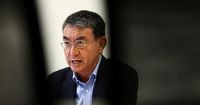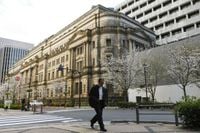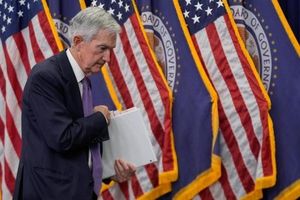Japan’s political and economic landscape is undergoing a period of exceptional upheaval, with ripples spreading from the upper echelons of the ruling Liberal Democratic Party (LDP) all the way to the country’s financial markets. In the wake of back-to-back election defeats, persistent economic headwinds, and rising calls for change at the top, the country’s leadership finds itself under intense scrutiny—and the stakes could hardly be higher.
It was just over a year ago, on August 14, 2024, when former Prime Minister Fumio Kishida announced his resignation after three years in office, stepping down to take responsibility for his faction’s failure to report income from political fundraising events. According to JAPAN Forward, this move was intended to spare the LDP a crushing defeat in the House of Representatives election. Power then passed to Shigeru Ishiba, but the transition did little to quell the underlying turmoil. Instead, it set the stage for a fresh round of internal party strife and mounting public dissatisfaction.
Since taking the reins, Ishiba has faced a rocky tenure. Despite his initial backing from Kishida’s former faction, Kochikai, the relationship between the two men has soured over the past year. A key flashpoint came during the spring 2025 cabinet reshuffle, when Ishiba opted to fill crucial posts with his own allies—such as Foreign Minister Takeshi Iwaya and Internal Affairs Minister Seiichiro Murakami—instead of Kishida’s preferred candidates. Kishida himself described this as “the first stumble,” a sign of growing distance between the former and current prime ministers. As the July 20, 2025 Upper House election approached, frustration within the LDP mounted over Ishiba’s failure to articulate a clear vision on diplomacy and the economy.
The consequences were swift and severe. The ruling coalition suffered a significant loss, forfeiting its majority in the upper house. As reported by Reuters and JAPAN Forward, this defeat has triggered an outpouring of criticism from within the party and renewed calls for Ishiba to step aside. At a July 23 meeting with former prime ministers, Ishiba was urged to “make the right decision quickly, or the party will split.” Three of his predecessors pressed him to “act with a sense of urgency,” highlighting the precariousness of his position.
Meanwhile, Kishida has kept a low profile but remains an influential figure behind the scenes. According to JAPAN Forward, he is widely seen as a kingmaker ahead of the next leadership contest, regularly meeting with senior LDP figures such as Taro Aso, the party’s senior advisor and head of the Aso faction (Shikokai). With most other factions dissolved, Aso’s support could prove decisive in the coming power struggle. Kishida is also said to be closely monitoring the political landscape, telling confidants, “There is no need to rush.” He appears content to watch and wait as Ishiba’s grip on power weakens.
The list of potential successors is already taking shape. Among those floated as “post-Ishiba” candidates is Agriculture Minister Shinjiro Koizumi, who met with Kishida at the Diet on August 8, 2025. Kishida’s closest aide, Seiji Kihara, backed Koizumi in the last leadership race, and Kishida himself is believed to place high hopes on Koizumi’s future. Chief Cabinet Secretary Yoshimasa Hayashi, another key player, maintains a steady relationship with Kishida, having supported his administration in the same role. However, as one senior LDP official pointed out, “Aso and Hayashi do not get along well, which could make it difficult for Kishida to lend his support.”
While the political drama unfolds, Japan’s financial markets are sending their own warning signals. On August 19, 2025, the 20-year government bond auction drew demand that was notably weaker than its 12-month average. According to Bloomberg, the bid-to-cover ratio fell to 3.09, down from 3.15 at the previous auction and below the 12-month average of 3.24. The immediate aftermath saw bond futures extend losses and yields rise, reflecting investor unease over Japan’s fiscal trajectory. The weaker demand is widely seen as a sign of caution among investors, who are wary of fiscal risks stemming from higher government spending and recent tax cuts. The ruling coalition’s loss of its upper house majority has only intensified this focus on longer-maturity bonds and the country’s fiscal outlook.
Underlying these market jitters is a broader debate about the direction of Japan’s economic policy. Taro Kono, a veteran LDP lawmaker and former foreign minister, has emerged as a vocal critic of the status quo. In a wide-ranging interview with Reuters on August 19, 2025, Kono argued that Japan must raise interest rates gradually and restore fiscal health to strengthen the weak yen—a currency whose decline has pushed up inflation and brought pain to households across the country. “I think it’s better to start early,” Kono said, referring to the need for the Bank of Japan (BOJ) to resume interest rate hikes. “It’s important to send out a message that Japan will pull out of a situation where real interest rates are negative.”
The BOJ ended its massive, decade-long stimulus program last year and raised short-term rates to 0.5% in January 2025, believing that Japan was on the verge of durably hitting its 2% inflation target. Yet Kono and other critics argue that the slow pace of rate hikes has kept the yen weak and pushed up import costs. “The best step to combat rising living costs would be to reverse the weak yen and seek a somewhat stronger yen,” Kono asserted. He also called for a new economic framework to replace the so-called “Abenomics” policies of former premier Shinzo Abe, which relied on a mix of aggressive monetary and fiscal stimulus to end deflation. “The BOJ should gradually raise interest rates, while the government should restore fiscal health under a new accord that replaces ‘Abenomics’,” Kono said.
Kono himself ran unsuccessfully in last year’s LDP leadership race, which was won by Ishiba. In the wake of the party’s heavy defeat in the July 2025 upper house election, calls for Ishiba to step down are growing louder. Kono, for his part, declined to comment on whether he would run again if the party were to hold another leadership contest. But the momentum for change is unmistakable, both within the LDP and among the broader public.
As autumn approaches, the sense of anticipation is palpable. Kishida’s cryptic remark that “autumn will be busy” hangs over the party’s upcoming deliberations, with many expecting the leadership election to be brought forward. The question now is not whether change is coming to Japan’s political and economic establishment, but how soon—and who will emerge to lead the country through its next chapter.





